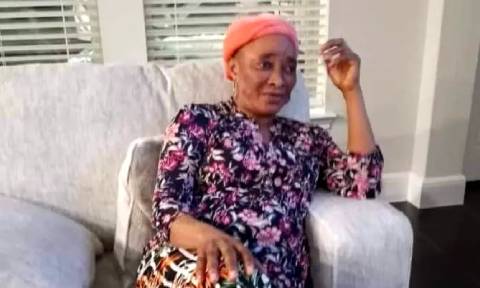
The D.I.Y spirit in Nigerian filmmaking must be applauded. It is really down to the Nigerian resilience and will for making anything out of nothing at all costs. British actor Nick Moran famed for his role in Guy Ritchie’s flick “Lock Stock and Two Smoking Barrels” once filmed a BBC documentary uncovering the workings of Nigerian home videos.
As part of the documentary, Nick was to direct his own home video, only to be amazed that halogen bulbs were shielded with umbrellas all tied together on a metal pole to act as lights and cameras were hoisted to wheel chairs mimicking dolly tracks, in order to shoot moving scenes. Nollywood has come a long way from halogen bulbs, wheel chair dolly tracks and VHS cameras.
A good story
However, a recent viewing of one of the new generation movies made me wonder whether we have really moved that many steps forward. From the adrenaline pumped opening scene to the music and sounds that already predict the forthcoming scene to the terrible storylines and of course the gallingly ambiguous anti-climax.
There was a realisation that even with the technological advancement, there is a need to go back to the basics: a good story. It is often said that too much spice in a sauce, means that the base is not very good. High definition or Red cameras topped up with star power doesn’t mask a bad and badly told story. D.I.Y did have its own role to play in the film.
Watching the end credits, it was brought to notice that the producer and director, was also the story developer, screen writer, co-executive producer, and supervising editor. With this, objectivity marks no bearing. The thought of ‘killing your darlings’ and laying them to rest on the chopping room floor will never come close to sight. This might just be the reason ethnocentric films may still be favoured with a stronger standing in international film festivals.
Third cinema
A return to its origins in “Third cinema” maybe an alternative: making sophisticated films that tackle strong themes and using it as a tool to document social realism. Still, finding a way to connect with its core audience without a cyclical recreation of caricature and amateurish characters. Take a look back at Ousmane Sembene’s Xala (The Curse), set in post-colonial Senegal.
The film depicts a Senegalese politician, El’Haj who is cursed with impotence on the day of his marriage to his third wife. This acquisition of a third wife symbolises greed as El-haj has attained a new political status so his other two wives are not good enough. The film satirises the corruption of post-independent governments and El-Haj’s impotence symbolises failure of politicians to break away from foreign influence. Xala is shot between urban and rural looking Senegal and the characters speak in Wolof.
The film is very humorous and still explores themes of greed, corruption and culture. The late Sembene was known as the father of African Cinema and Xala has become an inescapable reference material for any film outré in the making.
The movement spread to Latin America and even manifested in African American cinema with movies like Spike Lee’s Do The Right Thing and John Singleton’s Boys N the Hood.
Independent cinema
Another alternative is the American and European Independent cinema route. With movies like The Tenant and the latest release Ije, this might just be the likely path. Independent film traditions lay in the confines of the storytelling as much as the intricacy and intensity of the characters. With minimal budgets, minimal locations and minimal to no star power, independent films are the true test in creative and artistic credibility for film makers.
Some of the independent success stories within the past five years include ‘Crash’, ‘Dirty Pretty Things’, ‘Juno’ and a personal favourite, ‘Half Nelson’. Though Crash had an all star cast, they all took a drastic pay cut for the movie to be made.
Ryan Fleck’s, ‘Half Nelson’ told the story of Dan, an inner city school teacher in Brooklyn played by Ryan Gossling from The Notebook. Dan teaches history and rejects the standard curriculum in favour of Dialectics. He is something of a cool teacher who teaches them to think for themselves and tells his students about how change works on a historical and personal scale. Though he is in full control in the classroom, he spends his down time on the periphery of reality, freebasing on crack cocaine.
Drey is one of his students and a member of the basketball team he coaches. When Drey catches him in the toilet freebasing, the film takes us on a friendship between these two people who seem to be only answers to saving one another. We never find out why Dan started using drugs in the first place but Drey on the other hand is of a dysfunctional childhood with her mother working overtime as a hospital technician and her brother in jail for drug dealing. Drey becomes a target for Frank, the neighbourhood dealer’s distribution operation. Set in a small Brooklyn neighbourhood, Half Nelson earned Gossling an Oscar nomination in the best Actor category. It also got an original screenplay nomination.
In conclusion
It seems it all goes back to the base. A naturally flavoursome broth will never need too many additives. Franz Fanon said of the storytelling process, “the present is no longer turned in upon itself but spread across for all to see. The storyteller once more gives reign to his imagination. It even happens that the characters are taken up and remodelled. The storyteller replies to the expectant people by successive approximations towards the seeking out of new patterns.” Nollywood will need to do much more than glossy visuals if it is to stand toe to toe with the rest of the world.



















